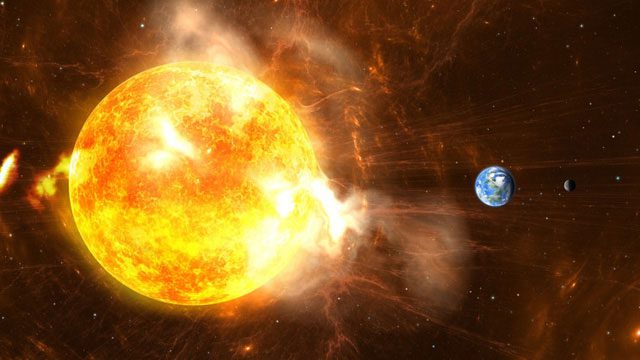Dr. Tamitha Skov, known as the “Space Weather Woman” in the United States, has announced that Earth will face a “direct hit” from a solar storm occurring on July 19.

A solar storm will hit Earth on July 19 – (Image: ISTOCK)
Skov shared this information on Twitter along with a NASA prediction model video: “Direct hit! A large storm, like a swirling snake, is blasting out from the Sun and directly attacking Earth. The magnetic field of this solar storm heading towards Earth will be very unpredictable. It could carry a G2 or G3 level pulse if the storm’s magnetic field is directed south.”
Solar storms are classified on a scale from G1 to G5, with G5 being the strongest.
“The National Aeronautics and Space Administration (NASA) predicts that the impact will occur early on July 19 (local time). The auroras will be strong and deep at mid-latitudes,” she explained.
The Sun is currently in an active phase of its 11-year cycle, and incidents like this are expected to increase, according to Interesting Engineering.
How harmful are solar storms really? Typically, they can cause significant power outages for Global Positioning System (GPS) systems and can disrupt the journeys of aircraft and small boats. Beyond that, there is not much to worry about.
Skov is a space weather physicist at the Aerospace Corporation in Los Angeles and a lecturer at the American Institute of Aeronautics and Astronautics. On social media, she is a prominent speaker forecasting and analyzing space weather phenomena.
|
According to the weather agencies of the United States and the United Kingdom, since March 2022, Earth has continuously faced geomagnetic storms from the Sun. Although these geomagnetic storms have not caused significant harm, they are indicative of stronger storms in the future. Most recently, in early July, a G1 class geomagnetic storm hit Earth, causing bright auroras across Canada. The only issue was that no one saw this storm, and by the time they realized it, it was quite late. On July 12, a giant sunspot and filaments on the Sun’s surface raised concerns among astronomers about the potential for solar flares directed towards Earth, and coronal mass ejections (CMEs) that could lead to power outages. On July 15, reports indicated that a significant flare erupted from the Sun, causing radio blackouts in many parts of the world. |





















































